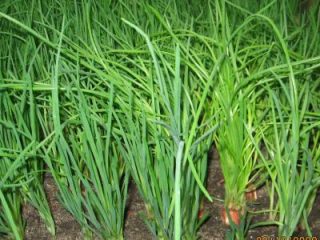Content
Onion seedlings in a snail is a modern and effective way to obtain young sprouts, which has recently become increasingly gaining popularity. Its main advantages are considered to be good germination of planting material and significant space savings. Growing a crop through seedlings is a worthwhile endeavor, as the procedure gives excellent results and allows you to harvest a good harvest throughout the summer.
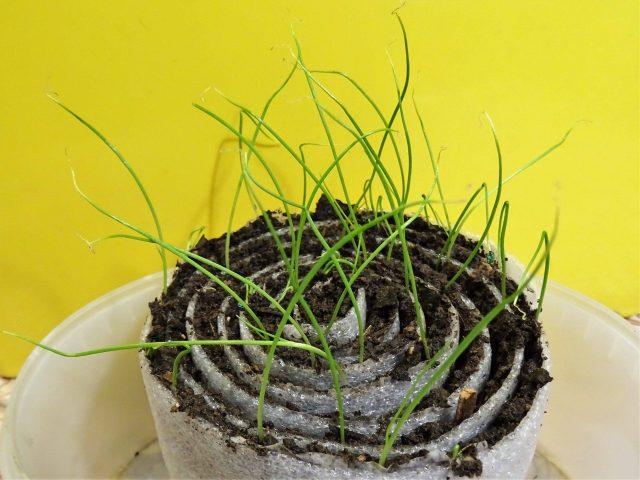
It is recommended to grow onions for seedlings only in the middle zone and northern regions
Description of the method
Planting onions in snails involves creating some kind of structure in which the seeds of the crop germinate. It represents a bundle made of any breathable material in which the plant grows before picking or planting in beds. The roll does not take up much space; even an inexperienced gardener can make it. This growing method was invented recently. Suitable for almost all types of plant crops.The design is inexpensive, can be made from scrap materials, and allows you to fit all the crops on one windowsill, which previously required a lot of space.
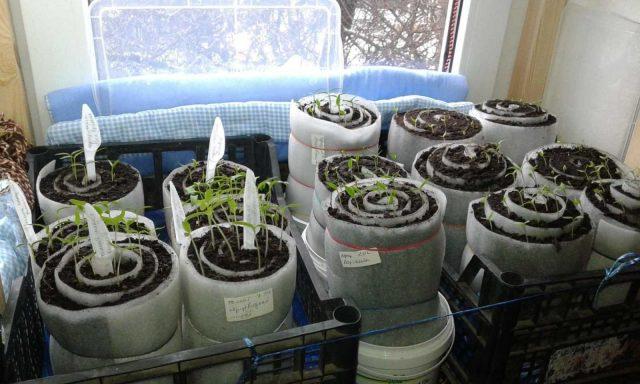
You can buy materials for creating a bundle at hardware or construction stores.
Advantages and disadvantages
The method of growing onion seedlings in a diaper or snail is quite common. Every gardener should try to plant a plant this way at least once.
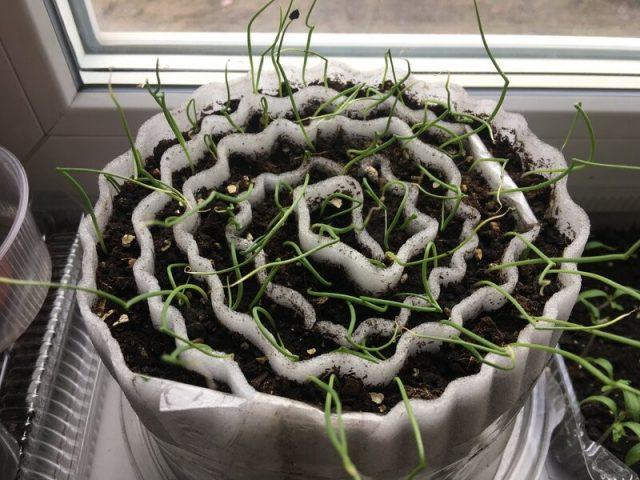
Growing seedlings this way is no more difficult than the usual one.
Advantages:
- significant space savings;
- low land consumption;
- excellent seed germination;
- ease of picking and landing in the ground;
- good preservation of the root system at the time of transfer to a permanent location.
Flaws:
- stretching seedlings in low light;
- possible waterlogging of planting material.
Materials for making a snail
To make bundles, you must first prepare all the necessary material. To make them you will need:
- Earth;
- seeds;
- backing for laminate boards;
- a container corresponding to the size of the snail;
- film or cellophane;
- rubber bands (scotch tape).
Sowing onions in a snail for seedlings
We will talk further about how to grow leeks in a snail. If you choose good and healthy material for planting and carry out all stages of work correctly, a positive result will definitely be achieved.

Seeds of an unnatural color or empty seeds are not suitable for growing seedlings in a snail.
Planting dates and seed preparation
Onion seedlings begin to be planted in the snail from the twentieth of March to the beginning of April. Since the seeds of the crop are covered with a hard shell, they are pre-soaked. The procedure is usually carried out not in water, but in a special solution. Most often, 3% hydrogen peroxide is used as a liquid and the seedlings are placed in it for a quarter of an hour. Next, they are washed and left in warm water for a day. Dry before use.
Sometimes seeds are soaked in a similar way in a solution of potassium permanganate, increasing the disinfection time to two hours.
Some gardeners simply spread the planting material between cotton pads, moisten them with water and leave for 24 hours. In this case, there is no need to wait for the pecking process. As soon as the seedlings swell, they are immediately sown.
Planting onions in a snail with soil
Growing leeks in a snail involves a number of steps. After all the necessary material has been prepared, and the seeds have been rejected and processed, you can begin to assemble the structure. To do this, cover the working surface with oilcloth, cut out strips from the backing, the length of which is 15 cm and the width of 8-10 cm. A layer of earth is poured on top of them, retreating about 1 cm from one edge. Next, the soil is moistened and compacted. Now, using tweezers, carefully place the seedlings at intervals of 20 mm from each other along the entire length of the snail, slightly deepening them. The place where the seeds are already lying is wrapped tightly. This is done with the entire length of the tape. Then the snail is moistened, covered with a bag or film on top, the resulting structure is placed in a tray and put away in a bright and warm place.Until the seedlings appear, the greenhouse is ventilated from time to time, and as soon as this happens, the cellophane is removed and the seedlings are then provided with the required care.
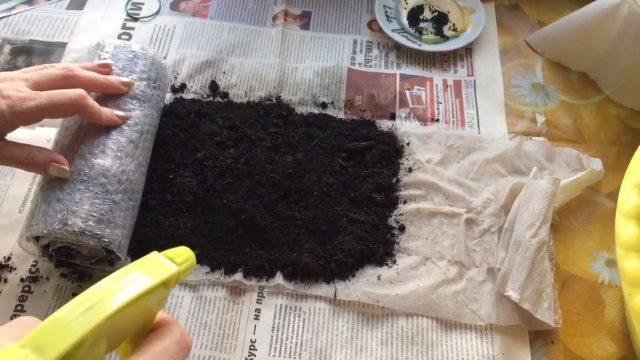
The method of growing onions in a snail is suitable even for dense planting
Onion seedlings in a snail without soil
Some gardeners organize sowing nigella onion seedlings in a snail without using land. To do this, several layers of toilet paper are laid out on the inside of the backing strip.
Prepared, disinfected onion seeds are laid out in a row, 10 mm below the edge of the strip, with an interval of up to 3 cm. Next, the seeds are irrigated with Epin's solution, covered with a layer of paper on top, sprayed again and rolled into a snail, without tightening it too much. Secure the structure with an elastic band, cover it with a bag, and place it in a glass or jar filled with water with the addition of a growth stimulator.
When loops begin to be visible on the surface, the roll is unrolled, a couple of centimeters of soil are poured onto the seeds, compacted, moistened and rolled again. Then they are cared for according to the scheme until they are planted on the site.
Mistakes when landing in a snail
Typically, those gardeners who follow all the rules for planting onions for seedlings in a snail are satisfied with the results. But if you make mistakes during the procedure, you may not get good sprouts. The most commonly observed violations are:
- Loose coiling of the snail. Because of this, the seedlings slide down.
- Untimely removal of cellophane. It should be removed as soon as the first shoots appear to eliminate the greenhouse effect.
- Place the snail upside down in the container.
- Picking seedlings at the wrong time. It is better to move already strong plants to another place, so they take root faster.
Aftercare
Seedlings of a culture in a snail, as when growing it by other methods, need to be looked after. To do this, follow the steps below:
- Provide regular watering for seedlings, preferably through a tray.
- Fertilize the seedlings in a timely manner. The first time with boric acid (3 g of powder per 1 liter of water), the second time with complex compounds or ash solution (10 g of substance per liter of liquid).
- Monitor the ground level. If feathers fall, soil is added.
- Provide seedlings with good lighting. The duration of daylight should be at least 12 hours.
Even while growing onions in a snail, you must trim its feathers. This stimulates the growth of greenery, makes the root system stronger, and helps to avoid lodging of the green mass. Also, the white part of the plant forms faster and grows larger due to this.

If the care of the seedlings in the snail is timely, the seedlings will grow strong and will easily adapt when transplanted into the ground.
Transplanting seedlings into open ground
One of the main advantages of planting onion seedlings in a snail is its subsequent transplantation into beds. The fact is that a common problem with containers and cups is that transferring them into the soil becomes more difficult. The roots stick to the walls of the container, intertwine with each other, reaching the sprouts; most of their roots can be damaged. This does not happen with a snail. The rolls unfold easily, and the sprouts are not injured at all.
When the time comes to plant snail seedlings, remove the rubber band from it, gradually unwind it and send it to a pre-prepared hole along with the soil. At the same time, the root system of each sprout is separate from each other and does not suffer in any way from the transplantation process.
Conclusion
Onion seedlings in a snail or diaper are one of the popular ways to obtain planting material for this vegetable crop. Many gardeners use the method and are satisfied with the results. Those who are afraid that they will not be able to grow onions this way, plant some of the seeds in a snail, and some using their usual method.

